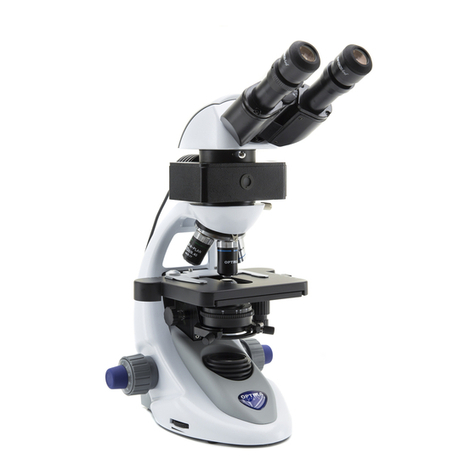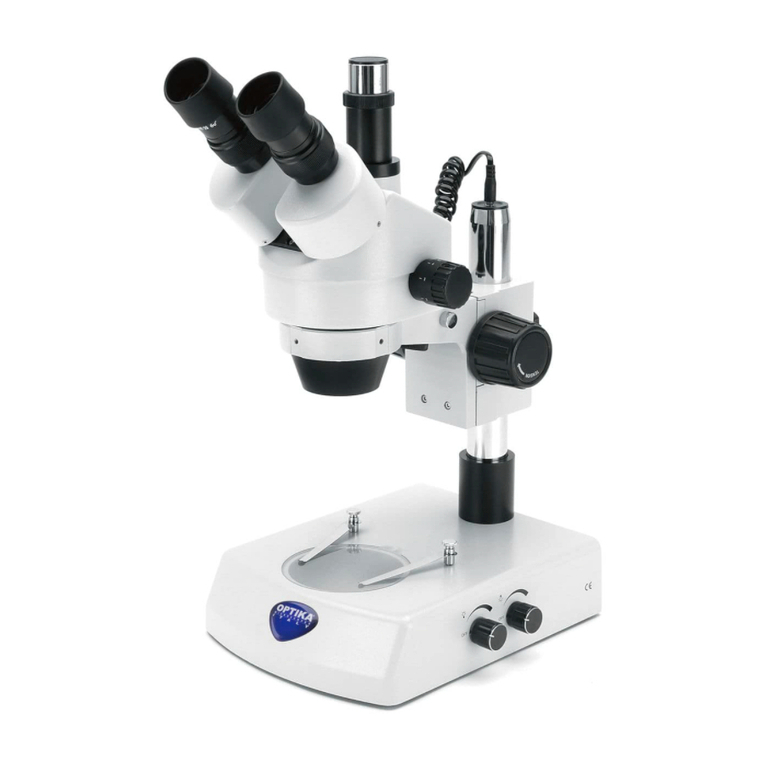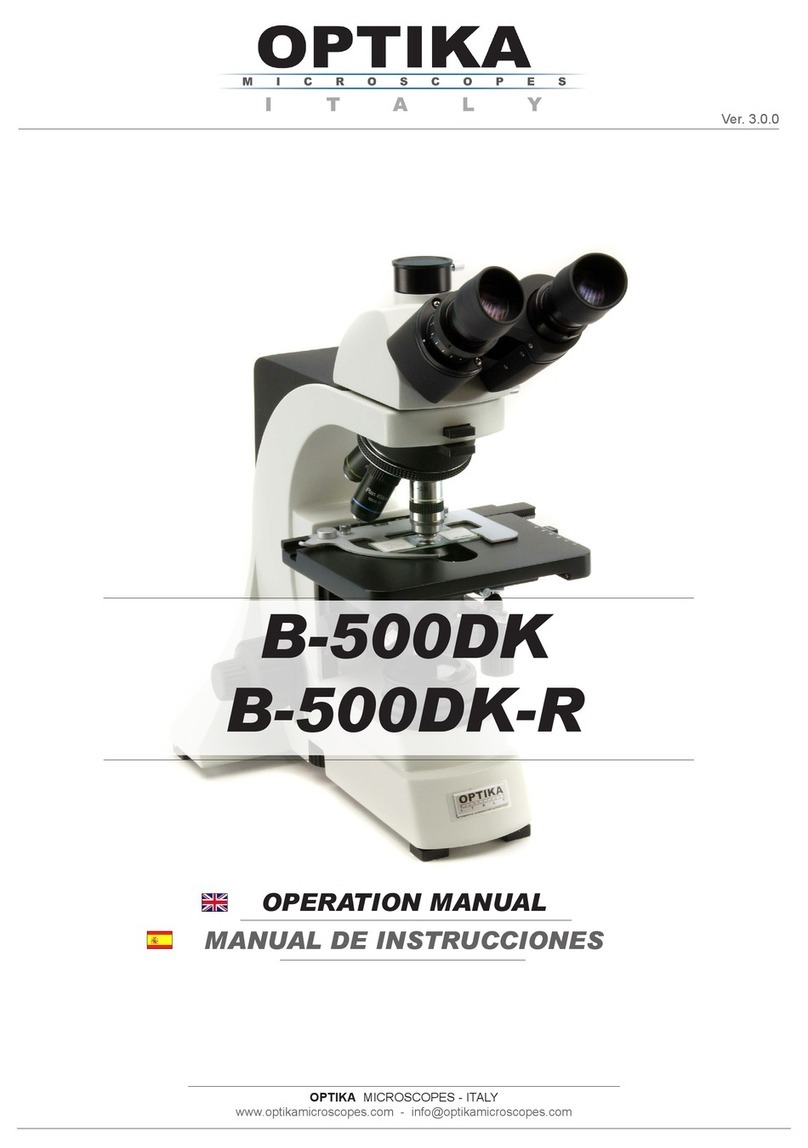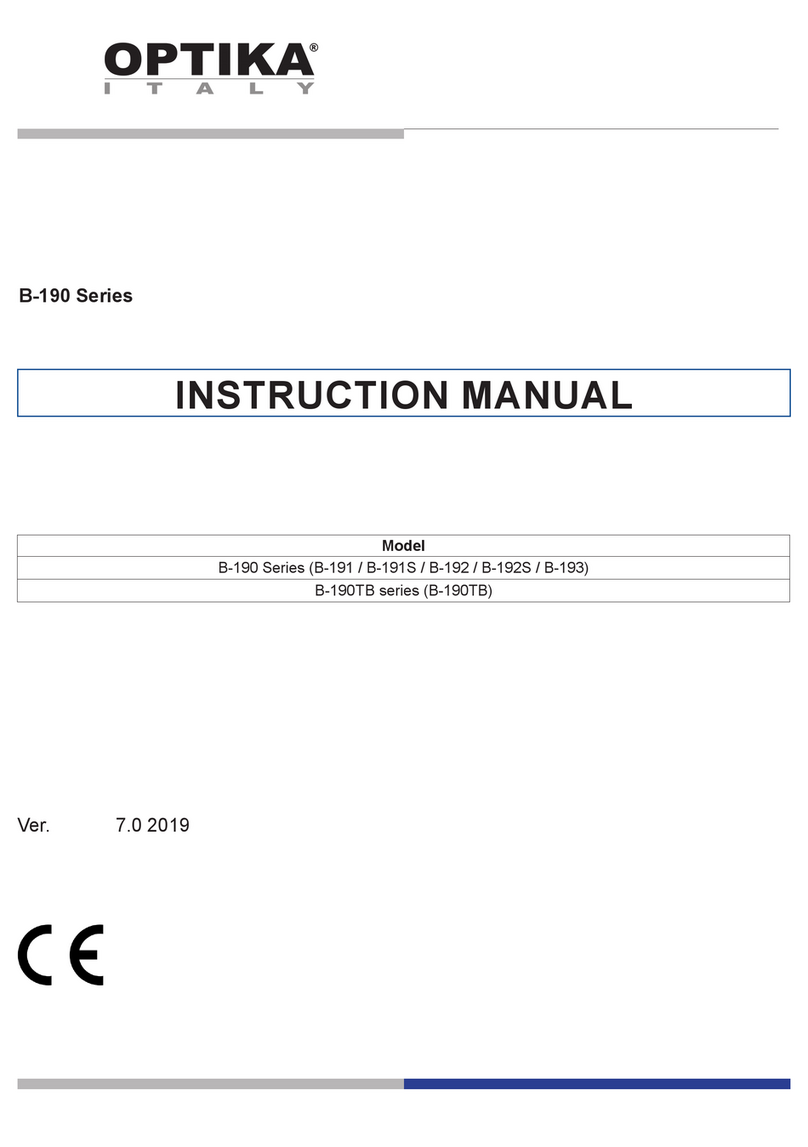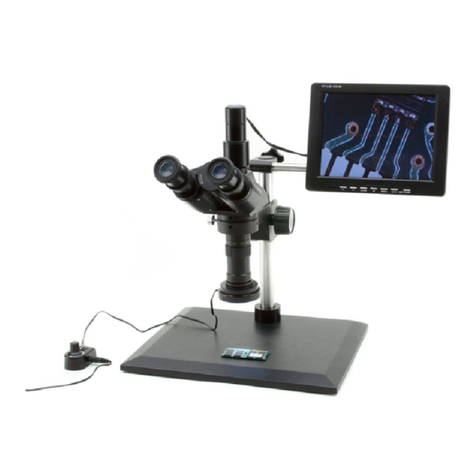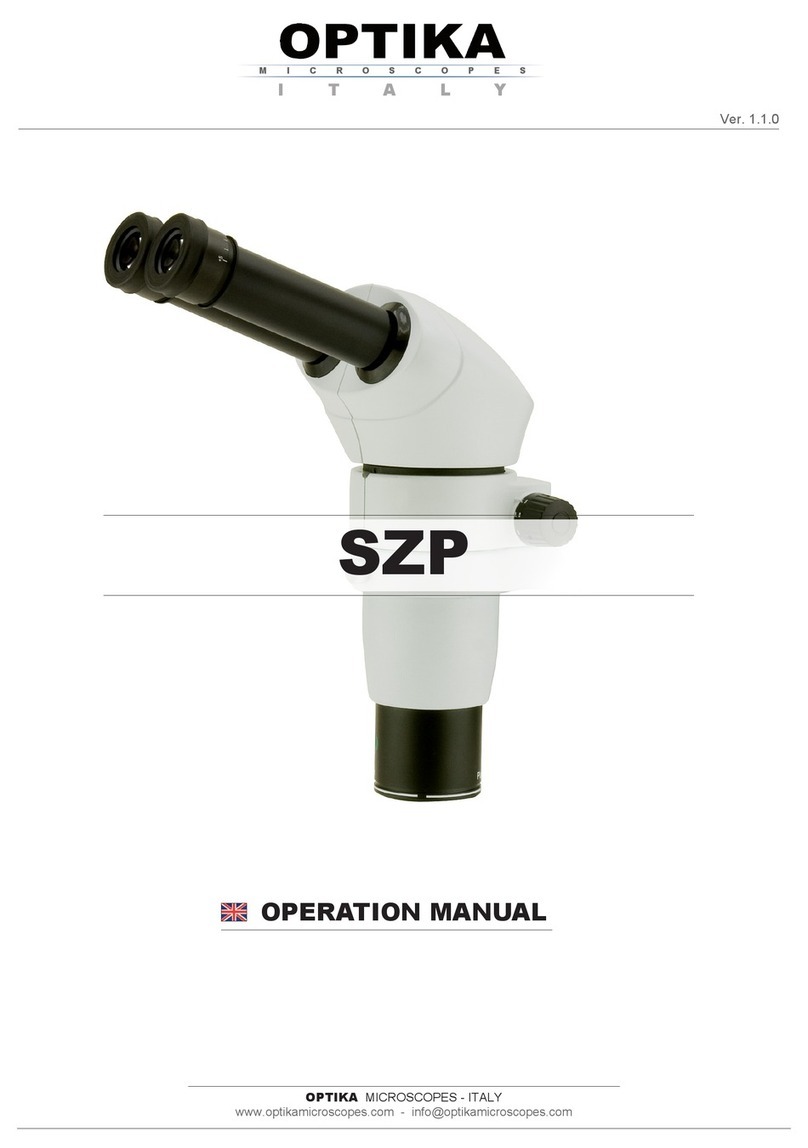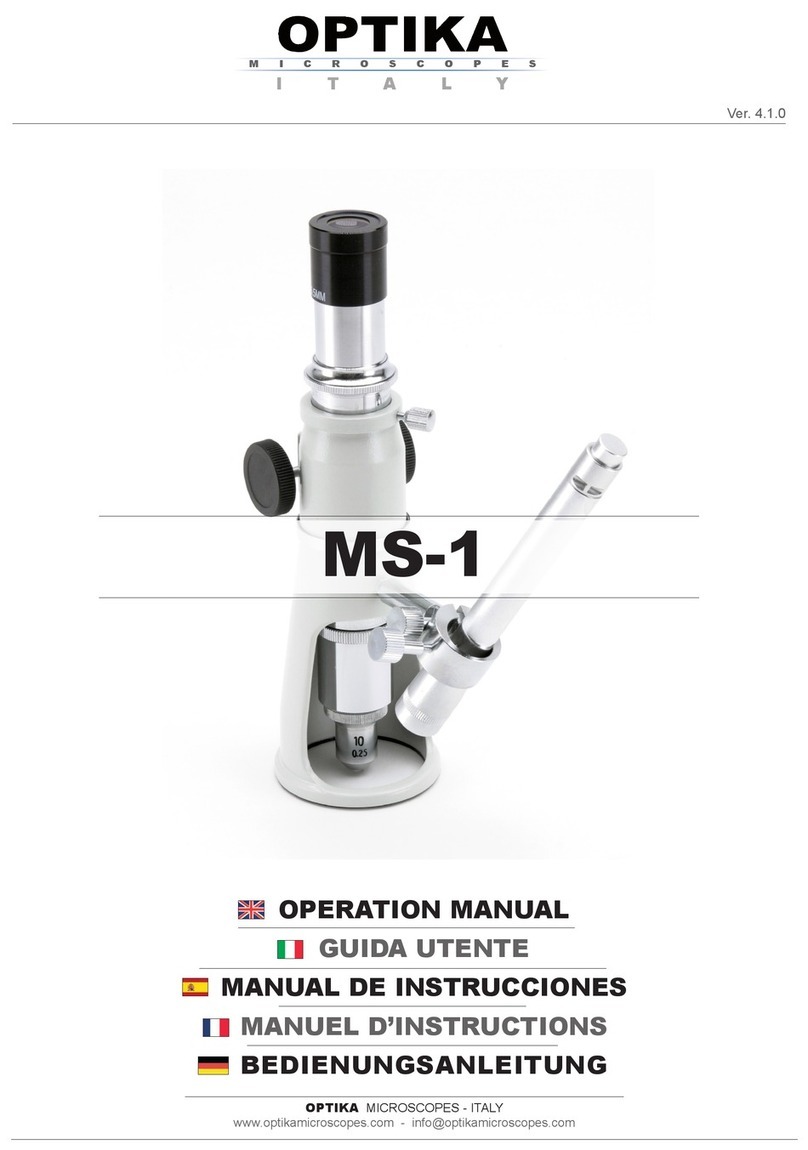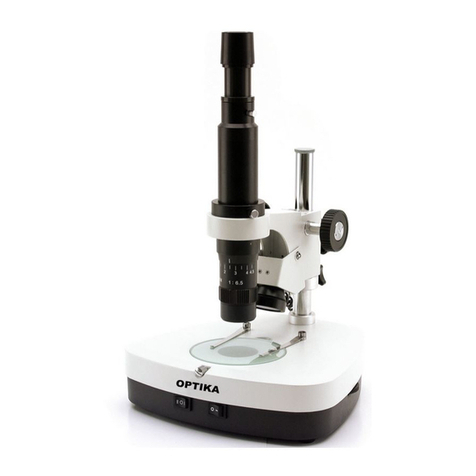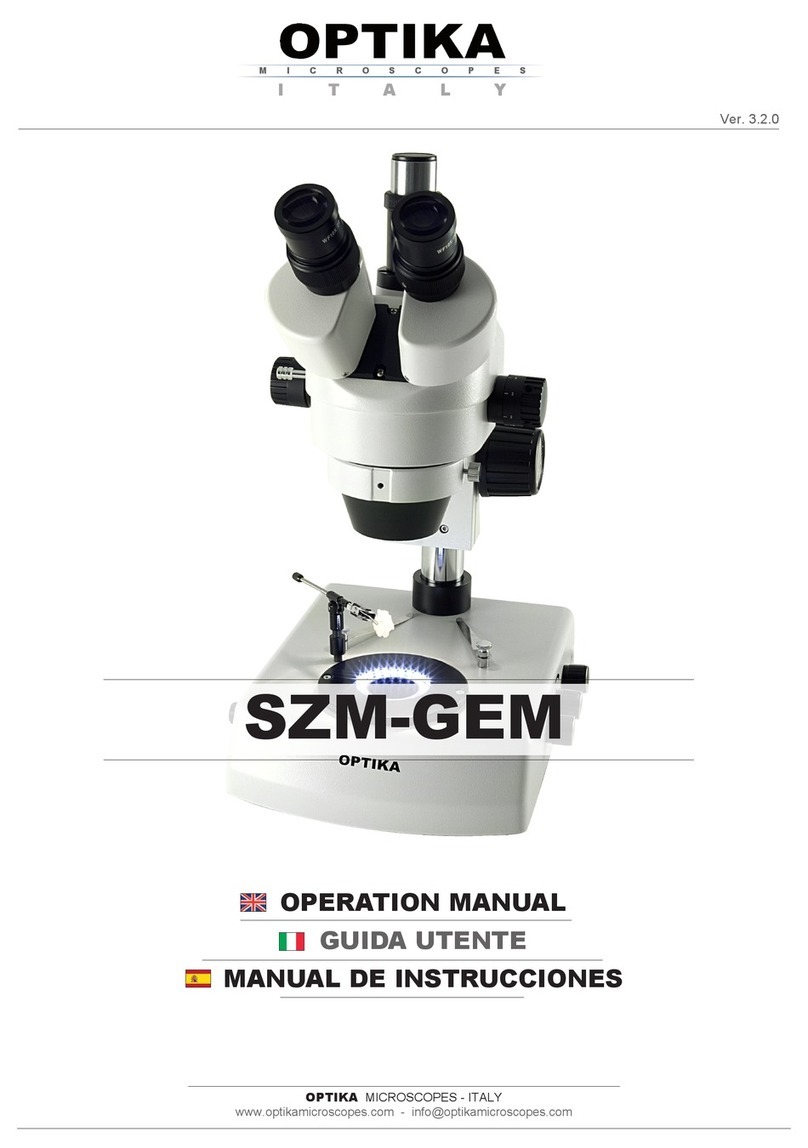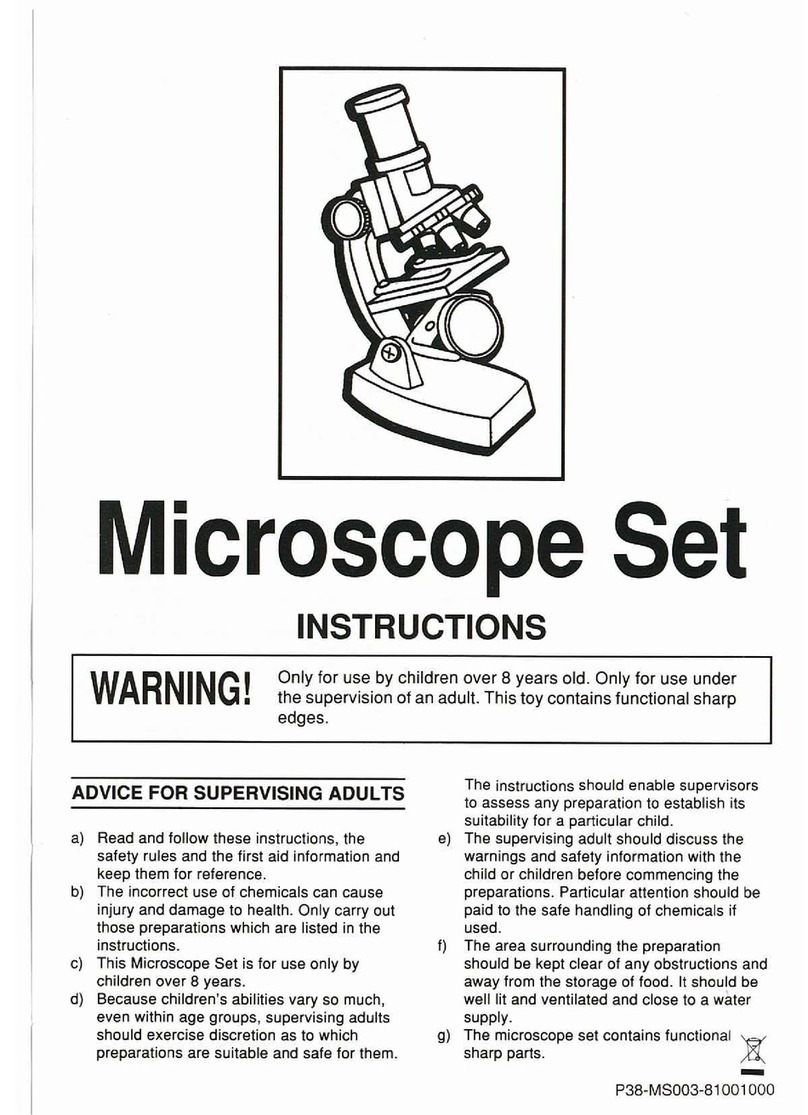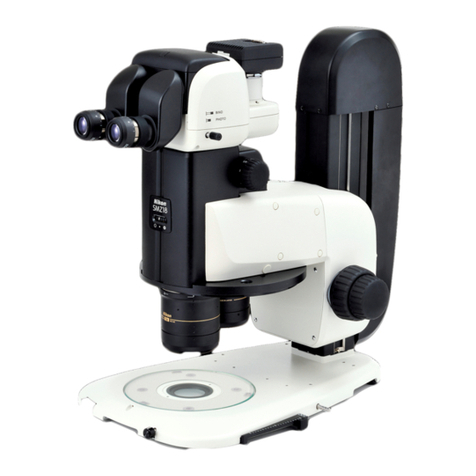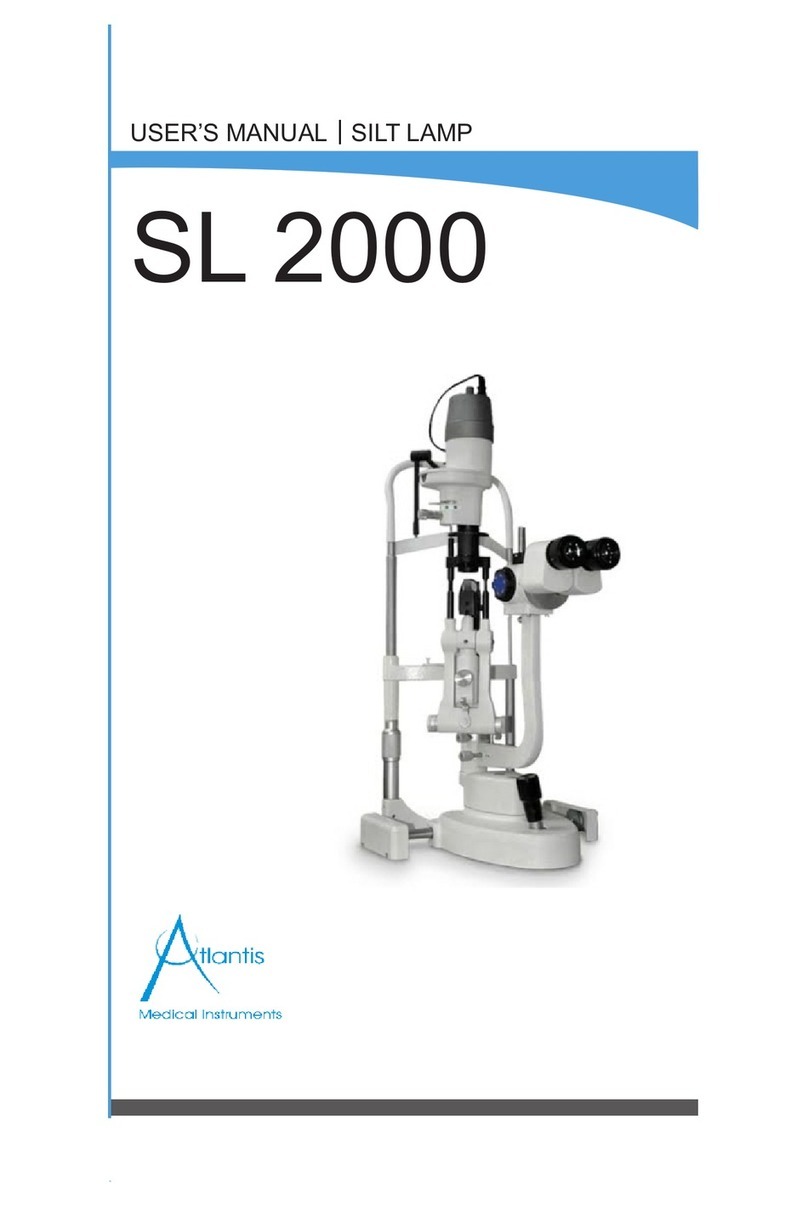
Page 10
7.1 Microscopy environment
This microscope is recommended to be used in a clean, dry and shock free environment with a
temperature of 0-40°C and a maximum relative humidity of 85 % (non condensing). Use a dehumidier
if needed.
7.2 To think about when and after using the microscope
• The microscope should always be kept vertically when moving it and be careful so that no moving
parts, such as the eyepieces, fall out.
• Never mishandle or impose unnecessary force on the microscope.
• Never attempt to service the microscope yourself.
• After use, turn off the light immediately, cover the microscope with the included dust-cover, and keep
it in a dry and clean place.
7.3 Electrical safety precautions
• Before plugging in the power supply, make sure that the supplying voltage of your region matches with
the operation voltage of the equipment and that the lamp switch is in off-position.
• Users should observe all safety regulations of the region. The equipment has acquired the CE safety
label. However, users do have full responsibility to use this equipment safely.
7.4 Cleaning the optics
• If the optical parts need to be cleaned try rst to: use compressed air.
• If that is not sufcient: use a soft lint-free piece of cloth with water and a mild detergent.
• And as a nal option: use the piece of cloth moistened with a 3:7 mixture of ethanol and ether.
Note: ethanol and ether are highly ammable liquids. Do not use them near a heat source, near
sparks or near electric equipment. Use these chemicals in a well ventilated room.
• Remember to never wipe the surface of any optical items with your hands. Fingerprints can damage
the optics.
• Do not disassemble objectives or eyepieces in attempt to clean them.
7.5 If you need to send the microscope to Optika for maintenance, please use the original packaging.
7.0 MAINTENANCE
B-150DMR - B-150DBR models are equipped with a built-in rechargeable battery.
The battery can be recharged simply by connecting the microscope to the provided external power supply,
using the jack connector on the rear.
During the charging process, you can use the microscope as usual.
In order to speed up the charging of the battery, it’s suggested to turn the
LED off when you connect the external power supply.
For a full charge, it’s suggested to keep the external power supply connected
to the microscope for at least 8 hours.
Always unplug the external power supply from the microscope, when
not in use.
6.0 RECHARGEABLE BATTERY (B-150DMR - B-150DBR MODELS)
